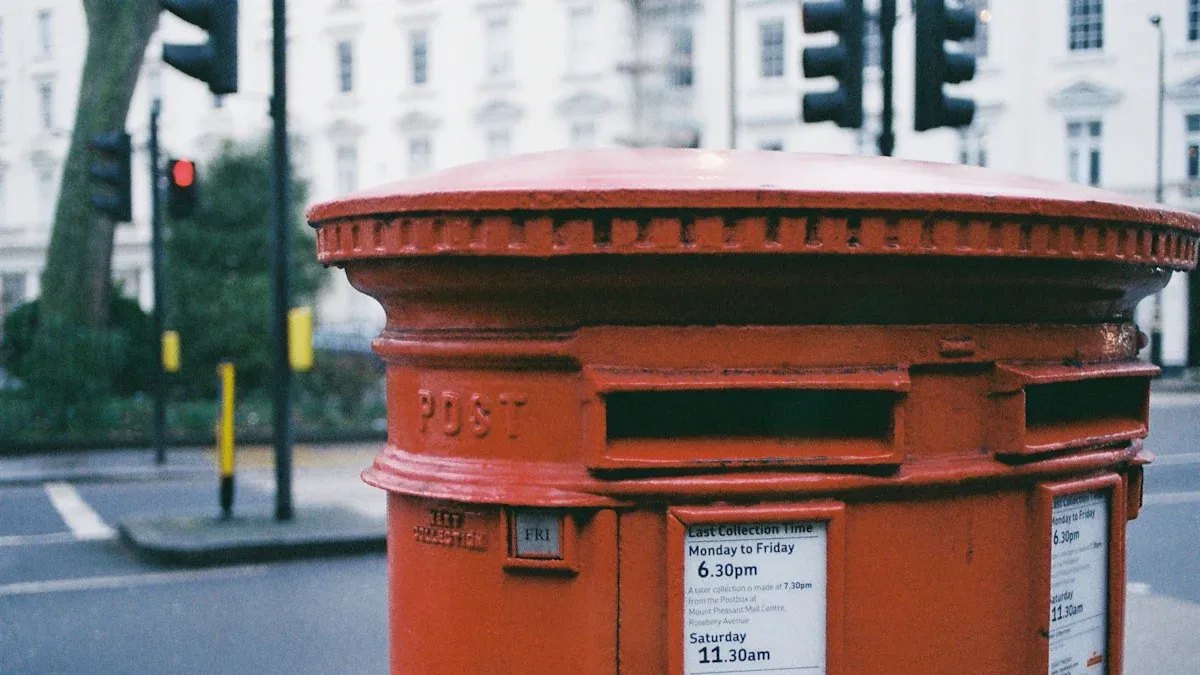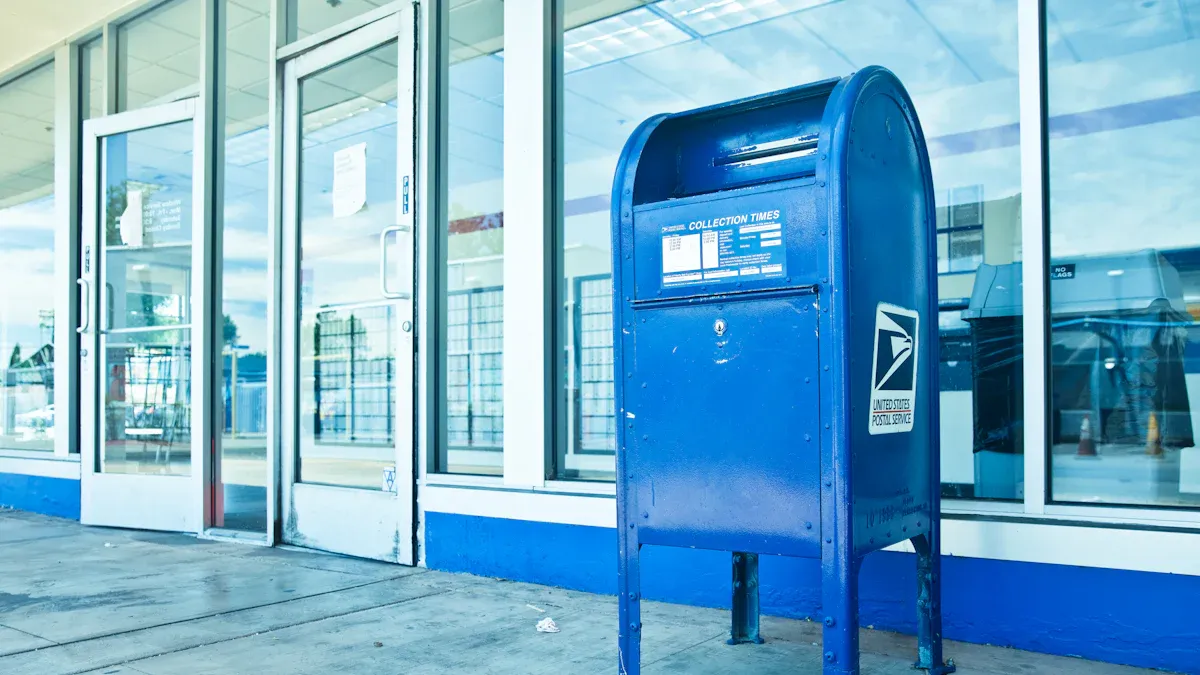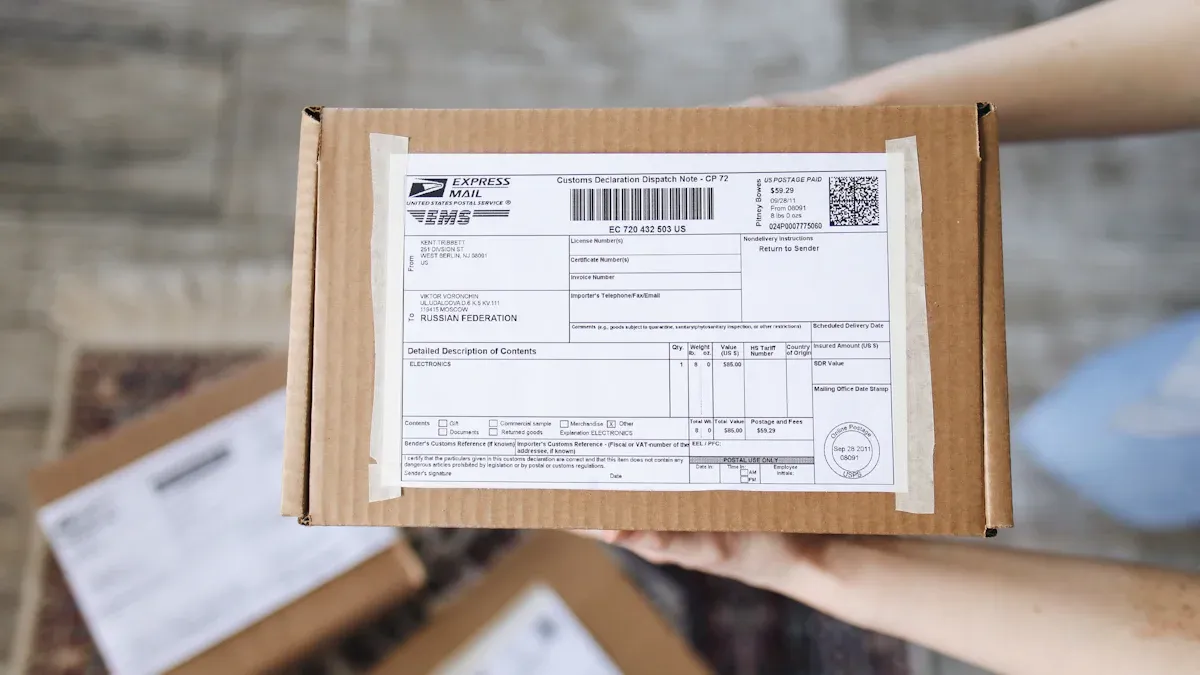What is a ZIP Code and Why Does It Matter
Author:XTransfer2025.04.15ZIP Code
A ZIP Code is a postal code system made by the U.S. Postal Service. It makes sending mail easier and faster. ZIP Codes help letters and packages get to the right place without mistakes. Each location has its own unique code to organize addresses and avoid delivery problems.
ZIP Codes are also important for businesses and research. Businesses use them to find good areas for growth, plan delivery centers, and create local ads. Analysts use ZIP Codes to study populations and learn about different regions. This system is very useful for planning and making decisions.
Highlights
-
A ZIP Code is a special system to deliver mail fast.
-
ZIP Codes group places together, making sorting and delivery easier.
-
'ZIP' means 'Zone Improvement Plan,' made to improve mail service.
-
ZIP+4 Codes give more details to help mail reach the right spot.
-
Companies use ZIP Codes to send ads, plan deliveries, and study customers.
-
ZIP Codes help researchers learn about people and population changes.
-
They also stop fraud in online shopping by checking addresses.
-
ZIP Codes are important for shipping worldwide, ensuring correct delivery.
Understanding ZIP Codes

What is a ZIP Code?
A ZIP Code is a number system made by USPS. It uses numbers to sort and deliver mail faster. When you add a ZIP Code, it shows the post office and delivery route. This helps your mail get to the right place quickly. ZIP Codes made mail delivery better across the country.
ZIP Codes are more than just numbers. They group addresses into areas to make mailing easier. For example, the first number shows a region, and the last two show the local post office. This setup helps USPS handle millions of mail pieces daily.
The meaning of "ZIP" (Zone Improvement Plan)
"ZIP" means "Zone Improvement Plan." It was made to improve mail delivery. Started in 1963, it changed how mail was sorted and sent. By grouping areas, ZIP Codes made delivery faster and with fewer mistakes.
ZIP Codes do more than help mail. They are used in insurance, real estate, and ads. Businesses use them to study people, plan markets, and make strategies. ZIP Codes also add billions to the economy, showing their value.
Structure of a ZIP Code
Breakdown of the five digits
A ZIP Code has five numbers, each with a job. The first three numbers show the main mail center, called the sectional center facility (SCF). This center sorts mail for big areas. The last two numbers show how mail gets to local post offices.
Geographic significance of the digits
The five-digit ZIP Code is based on geography. The first number shows a big U.S. region, like the West Coast. The second and third numbers show a mail center in that region. The last two numbers show the local post office or delivery area.
The History of the US ZIP Code System
Origins of ZIP Codes
Introduction by USPS in 1963
The ZIP Code system started on July 1, 1963. It was a big change by the United States Postal Service (USPS) to make mail delivery better. Before this, cities had postal zones, but they were not very good. Postmaster General John A. Gronouski told everyone about the ZIP Code system on April 30, 1963. This was a big change in how mail was sorted and sent. The new system used a five-digit code to make things easier and faster.
The ZIP Code system was part of a plan called Nationwide Improved Mail Service (NIMS). It helped the USPS sort mail with machines, which saved a lot of work. For example, sorting steps went from 10 to just 4. This made mail delivery quicker and more dependable. ZIP Codes also helped start new mail processing technologies.
Purpose of creating the system
The main goal of the ZIP Code system was to make mail delivery faster. By giving special codes to places, the USPS could sort mail better and deliver it quicker. This system also cut down mistakes, making sure letters and packages got where they needed to go on time.
Besides helping mail delivery, the ZIP Code system helped businesses and government groups. It made organizing data and resources easier. For example, businesses could use ZIP Codes to plan delivery routes or find target markets. The system also helped in studies about people, showing population trends and area details.
Evolution of ZIP Codes
Addition of ZIP+4 Codes
In 1983, the USPS added the ZIP+4 Code to make mail sorting even better. This new format added four more numbers to the original five-digit code. It gave more exact location details. The extra numbers showed specific buildings or delivery spots in a ZIP Code area. This made mail handling better, especially in crowded places.
The ZIP+4 Code was great for businesses. It helped them work better by making addresses more accurate and cutting delivery times. For example, companies could use ZIP+4 Codes to improve their supply chains or make sure products arrived on time. This addition also helped new mail processing technologies like barcoding and optical character recognition (OCR).
Importance of ZIP Codes
Role in Mail Delivery
Ensuring Accuracy and Efficiency
ZIP Codes help mail get to the right place fast. Each area has its own code, making sorting easier. ZIP+4 Codes give even more details for better delivery. This system reduces mistakes and ensures mail arrives on time.
Using the correct ZIP Code also checks if an address is valid. It matches the address to the right location. This process lowers errors and makes mail delivery smoother.
Reducing Errors and Delays
Before ZIP Codes, sorting mail was slow and had mistakes. Adding ZIP+4 Codes in 1983 made sorting even more accurate. These codes show exact buildings or delivery spots, avoiding delays.
The USPS reviews boundaries to keep ZIP Codes updated. This helps as cities grow and change. By cutting errors and delays, ZIP Codes make mail delivery reliable.
ZIP+4 Codes and Their Benefits
What is a ZIP+4 Code?
A ZIP+4 Code is a better version of a regular ZIP Code. It has the usual five numbers, plus a hyphen and four extra digits. These extra numbers give more exact details, like a specific building, apartment, or delivery route in an area. The USPS started using this system in 1983 to make mail sorting and delivery more accurate.
The main difference between a regular ZIP Code and a ZIP+4 Code is the detail. A regular ZIP Code shows a general area, but a ZIP+4 Code points to a specific spot. For example, the extra four numbers might show a certain floor in a building or a department in a big company. This extra detail helps mail get delivered faster and with fewer mistakes.
How ZIP+4 Codes Improve Precision
Benefits for Businesses
ZIP+4 Codes are very helpful for businesses. They give exact delivery details, which helps companies plan better. This reduces shipping mistakes and ensures packages arrive on time. Businesses can also use ZIP+4 Codes to create better delivery routes, saving time and money.
ZIP+4 Codes also help businesses check addresses more easily. By spotting wrong or incomplete addresses before shipping, companies avoid costly errors.
Benefits for Mail Delivery
For mail delivery, ZIP+4 Codes make sorting faster and reduce mistakes. The extra four numbers help sort mail better, so letters and packages arrive quicker. These codes also give detailed location info, helping postal workers with tricky delivery routes.
ZIP+4 Codes are especially useful in crowded areas or places with lots of mail. They help the USPS use resources wisely, even during busy times. By improving accuracy and speed, ZIP+4 Codes make the postal system more reliable.
-
ZIP+4 Codes make sorting faster and reduce delivery mistakes.
-
They give detailed location info for better address checking and planning.
-
The extra numbers improve sorting and delivery, making mail arrive faster.
-
These codes help plan delivery routes, saving time and cutting costs.
Applications in Business
Logistics and Supply Chain Management
Businesses use ZIP Codes to plan deliveries and save money. ZIP+4 Codes help find exact delivery spots, speeding up shipping. This saves time and lowers costs.
ZIP Codes also help decide where to place warehouses. Companies can pick spots based on demand, getting products to customers faster. Accurate ZIP Code data helps businesses work better.
Marketing and Customer Segmentation
ZIP Codes help businesses target ads to the right areas. By studying ZIP Code data, they can focus on specific groups of people. This makes their ads more effective.
For example, a store might find areas with high demand for their items. They can then advertise more in those places. ZIP Codes help businesses understand customers and plan smarter.
Use in Demographic Analysis
Studying Population Trends
ZIP Codes show how populations grow and change over time. Researchers use them to study age, income, and where people move. This helps predict changes in different areas.
Governments and planners use this data to manage resources. They can plan better for future needs by knowing population trends.
Identifying Regional Characteristics
Each ZIP Code shows unique traits like culture, economy, and housing. Studying ZIP Codes helps understand these differences between areas. For example, some areas may change due to new developments.
This information helps businesses and researchers find opportunities. Whether planning ads or studying people, ZIP Codes give useful details for decisions.
Contribution to Fraud Prevention
Checking Addresses
Checking addresses helps stop fraud, especially in online shopping. When you buy something online, you give your billing address and payment info. Stores use a system called Address Verification System (AVS) to check if your address is correct. AVS compares the numbers in your billing address, like the ZIP Code, with the bank's records. If they match, the purchase goes through. If they don’t match, the store may cancel the order or look into it.
AVS is helpful for online transactions where buyers and sellers aren’t face-to-face. By checking the billing address or ZIP Code, stores can spot fake transactions. Many businesses set up rules to block orders with wrong or missing matches. This lowers the chance of fraud and makes sure only real purchases are accepted. It keeps both customers and stores safe.
Making Online Shopping Safer
Online shopping is common but comes with risks. Systems like AVS add safety to online payments. For example, when you use your credit card at a gas station, you might enter your ZIP Code. This step checks if the cardholder’s info matches the bank’s records. If the ZIP Code is wrong, the payment is stopped, preventing misuse.
The ZIP+4 Code also helps make online payments safer. It gives detailed address info, making it easier to confirm customer details. This accuracy lowers the chance of fake transactions. Businesses using these systems have fewer payment problems and build trust with customers.
In today’s digital world, safe shopping is very important. Address checks and tools like ZIP+4 Codes make online shopping safer. By confirming addresses and adding security steps, these systems protect you from fraud and build trust in online stores.
Comparing ZIP Codes Globally

US ZIP Code system vs. other postal code systems
Canadian postal codes
Canada has a different postal code system than the US. Canadian postal codes mix letters and numbers, like "K1A 0B1." This format alternates between letters and numbers for more detail. Each code represents a small area, sometimes just one building. This helps Canada Post deliver mail well, even in faraway places.
Canadian postal codes also have a space in the middle. The first letter shows the province or territory. The second part narrows it to a smaller region. For example, codes starting with "M" are for Toronto. This system works well, especially in cities, for accurate mail delivery.
UK postal codes
The UK uses postcodes, which are also unique. Postcodes combine letters and numbers, like "SW1A 1AA." They are very specific, often pointing to one street or building. This helps Royal Mail deliver mail quickly and correctly.
UK postcodes start with an "outward code" for a town or district. The "inward code" shows the exact delivery spot. For instance, "SW1A" is a district in London, and "1AA" is a specific address. This system is great for crowded areas, ensuring precise deliveries.
ZIP Codes in global logistics
International shipping
ZIP Codes are important for sending packages overseas. They help make sure packages go to the right place. Shipping companies use ZIP Codes to sort and send packages faster. This avoids delays and ensures packages arrive on time.
In global shipping, ZIP Codes show regions and delivery routes. For example, a package from the US to Europe may go through many sorting centers. The ZIP Code helps it move smoothly at each step. Without ZIP Codes, international shipping would have more mistakes and delays.
Cross-border e-commerce
Online shopping between countries depends on postal codes like ZIP Codes. When you buy something from another country, your ZIP Code helps calculate shipping costs and delivery time. Correct ZIP Codes help businesses avoid delivery problems and serve customers better.
For example, online stores use ZIP Codes to figure out taxes and fees. This way, you know the total cost before buying. ZIP Codes also help sellers find popular areas to target more customers.
ZIP Codes changed how mail is sent and how businesses work. First used in 1963, they made sorting and delivery faster. In 1983, ZIP+4 Codes added more accuracy. Now, ZIP Codes do more than help mail. They are used in studies, ads, and health research.
-
They make sure mail gets to the right place.
-
Companies use them to find customers and plan deliveries.
-
Experts study ZIP Codes to learn about people and health.
Knowing their importance helps you see how ZIP Codes affect daily life and modern systems.
FAQ
What does "ZIP" mean in ZIP Code?
"ZIP" means "Zone Improvement Plan." It was made to sort mail better. This system groups addresses into zones for faster delivery.
How many numbers are in a ZIP Code?
A regular ZIP Code has five numbers. The ZIP+4 Code adds four more numbers for exact locations, like buildings or routes.
Why do businesses need ZIP Codes?
Businesses use ZIP Codes to plan deliveries and target ads. They also study customer data and fix shipping mistakes to save money.
Do ZIP Codes ever change?
Yes, ZIP Codes can change when cities grow or areas change. USPS updates them to keep mail delivery smooth and efficient.
How is a ZIP Code different from a ZIP+4 Code?
A ZIP Code shows a general area. A ZIP+4 Code gives more details, like a specific building or route, for better delivery.
Are ZIP Codes used in other countries?
No, ZIP Codes are only in the U.S. Other countries have their own systems, like Canada’s postal codes or the UK’s postcodes.
How do ZIP Codes stop fraud?
ZIP Codes check addresses during online shopping. Systems like AVS match ZIP Codes with bank info to catch fake purchases.
Can two places have the same ZIP Code?
Yes, small towns or rural areas might share a ZIP Code. USPS uses extra details, like street names, to deliver mail correctly.

Related content